Module hubspot.crm.engagements.tasks

ballerinax/hubspot.crm.engagements.tasks Ballerina library
Overview
HubSpot is an AI-powered customer relationship management (CRM) platform.
The ballerinax/module-ballerinax-hubspot.crm.engagements.tasks connector offers APIs to connect and interact with the Hubspot Engagements Tasks API endpoints, specifically based on the HubSpot REST API.
Setup guide
To use the HubSpot Engagements Tasks connector, you must have access to the HubSpot API through a HubSpot developer account and a HubSpot App under it. Therefore, you need to register for a developer account at HubSpot if you don't have one already.
Step 1: Login to a HubSpot developer account
If you have an account already, go to the HubSpot developer portal
If you don't have a HubSpot Developer Account you can sign up to a free account here
Step 2: Create a developer test account (Optional)
Within app developer accounts, you can create developer test accounts to test apps and integrations without affecting any real HubSpot data.
Note: These accounts are only for development and testing purposes. In production you should not use developer test accounts.
-
Go to Test Account section from the left sidebar.
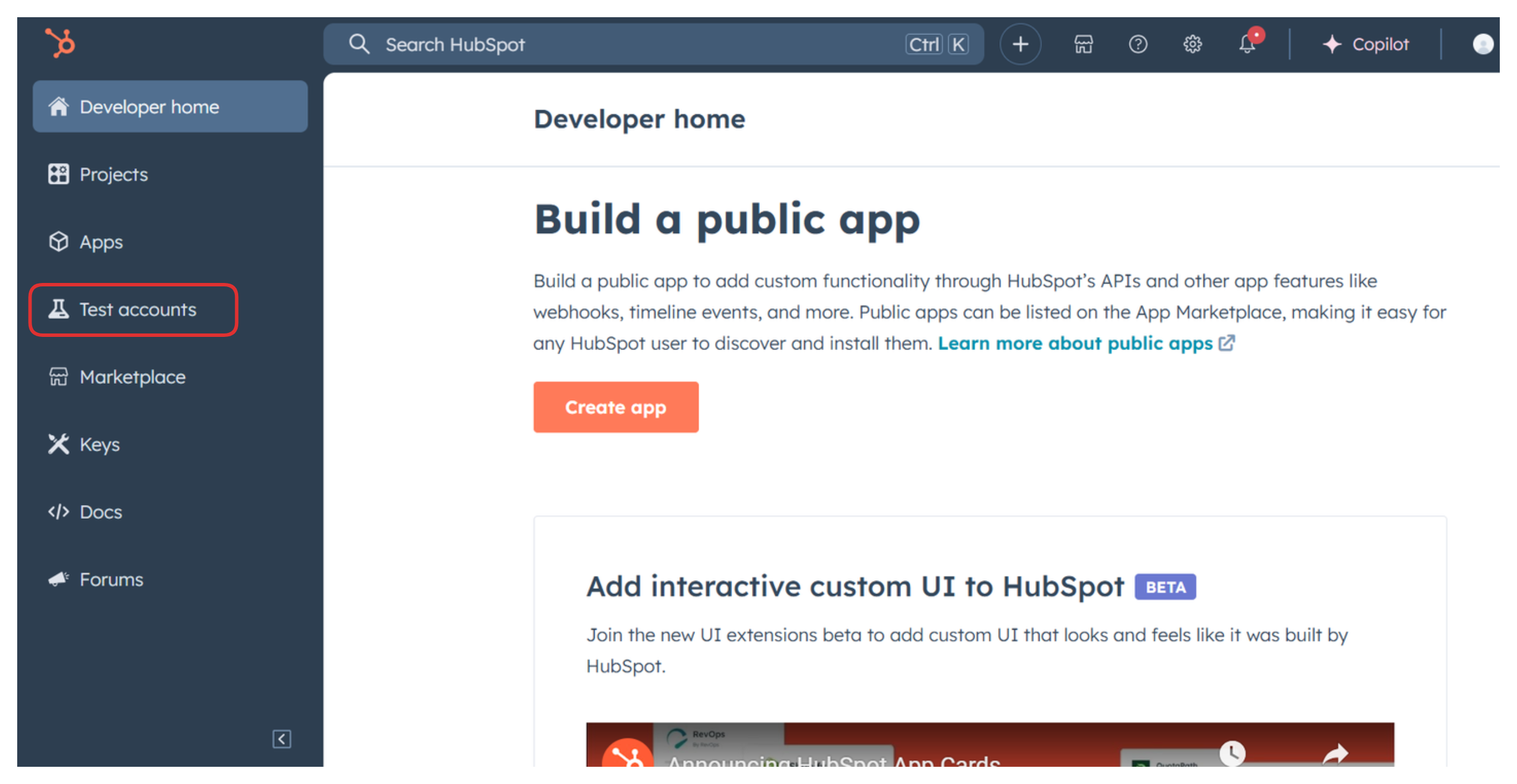
-
Click Create developer test account.
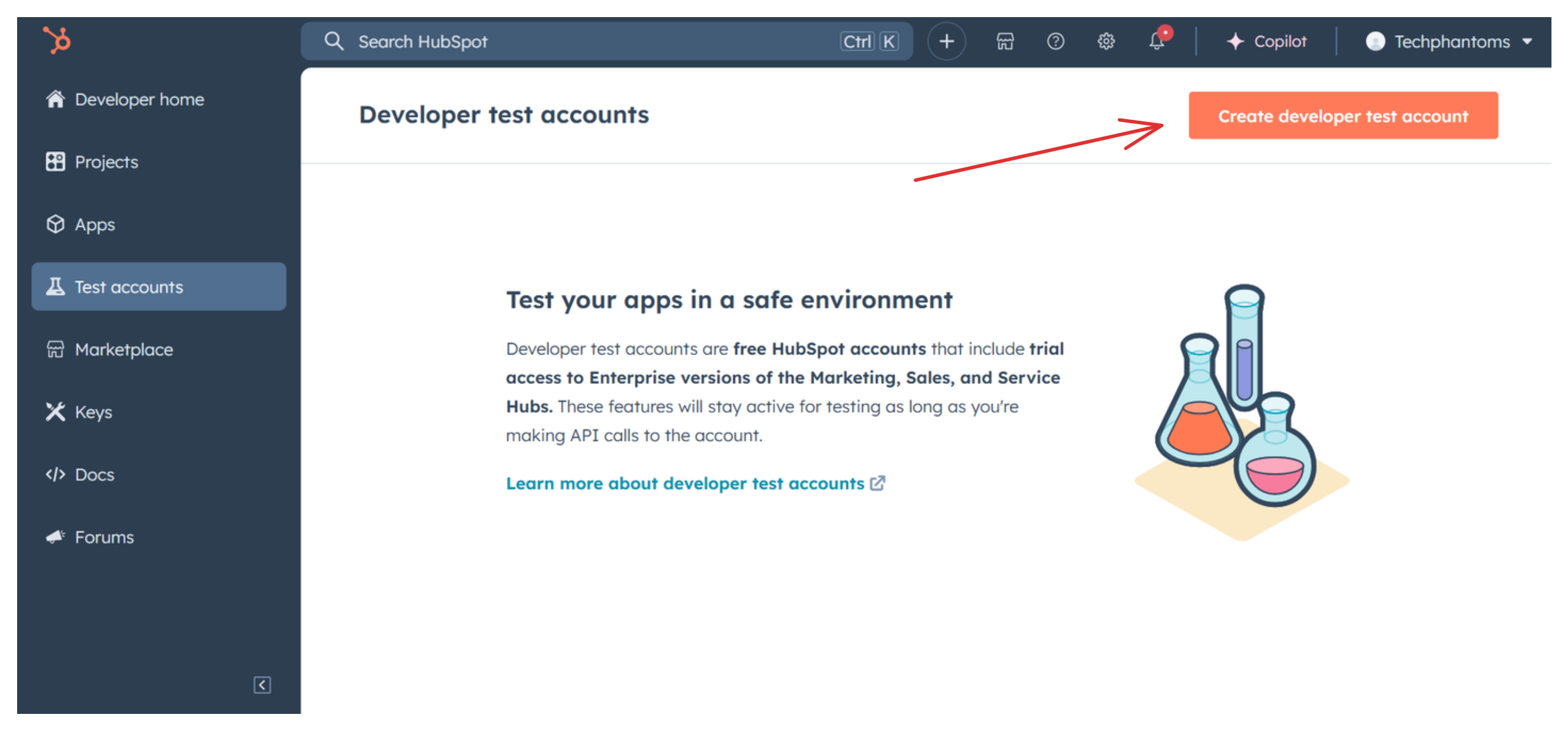
-
In the dialogue box, give a name to your test account and click create.
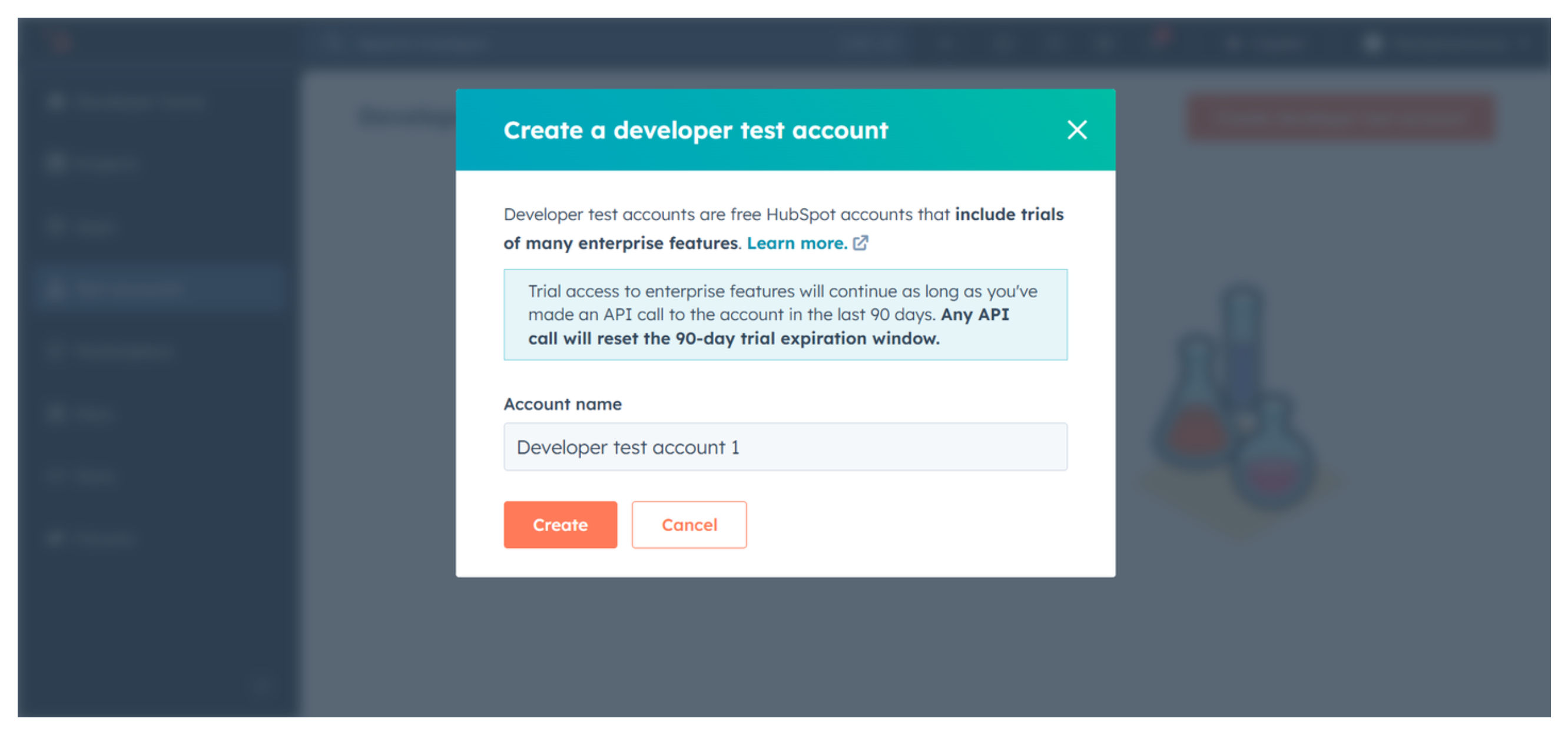
Step 3: Create a HubSpot app
-
In your developer account, navigate to the "Apps" section. Click on "Create App"
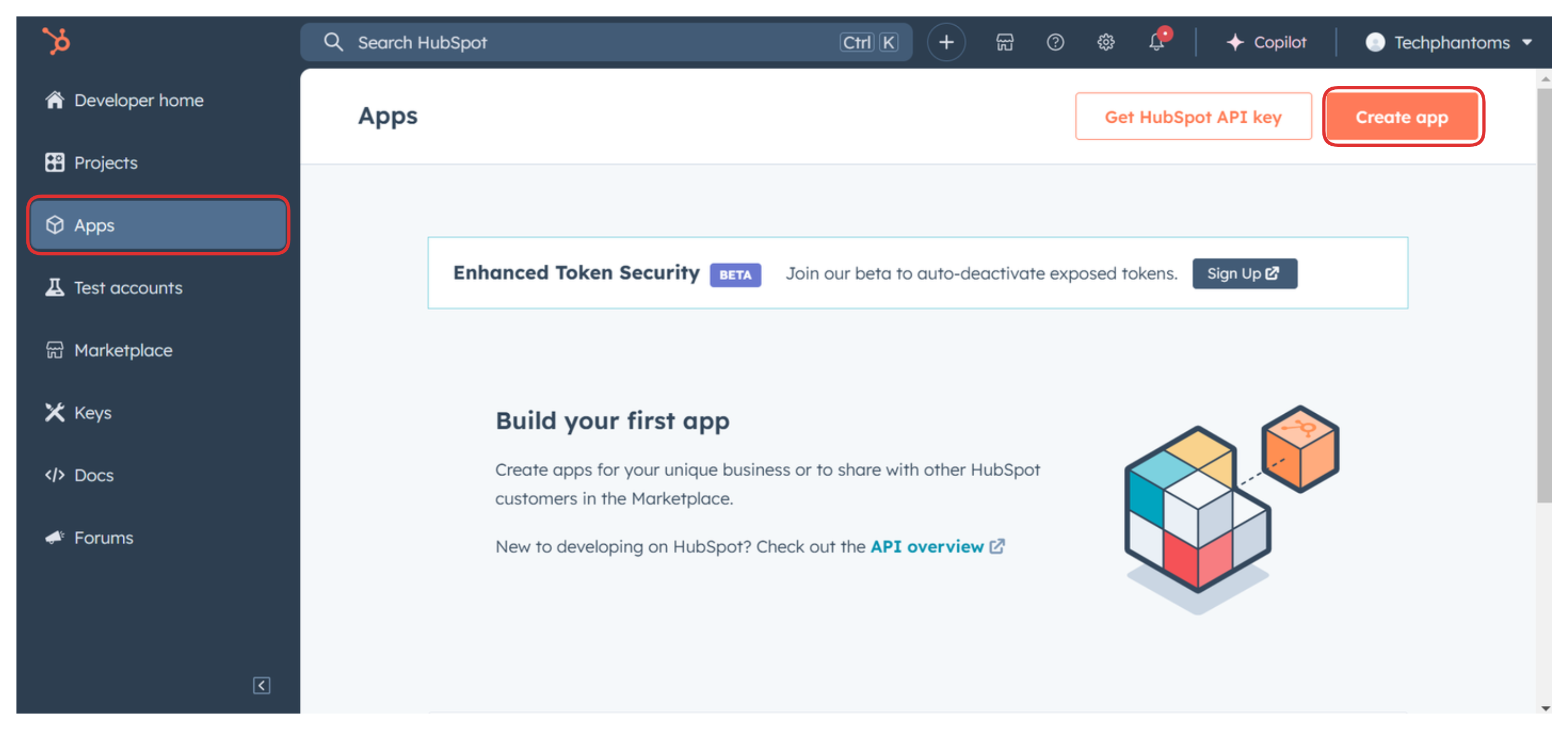
-
Provide the necessary details, including the app name and description.
Step 4: Configure the authentication flow
-
Move to the Auth Tab.
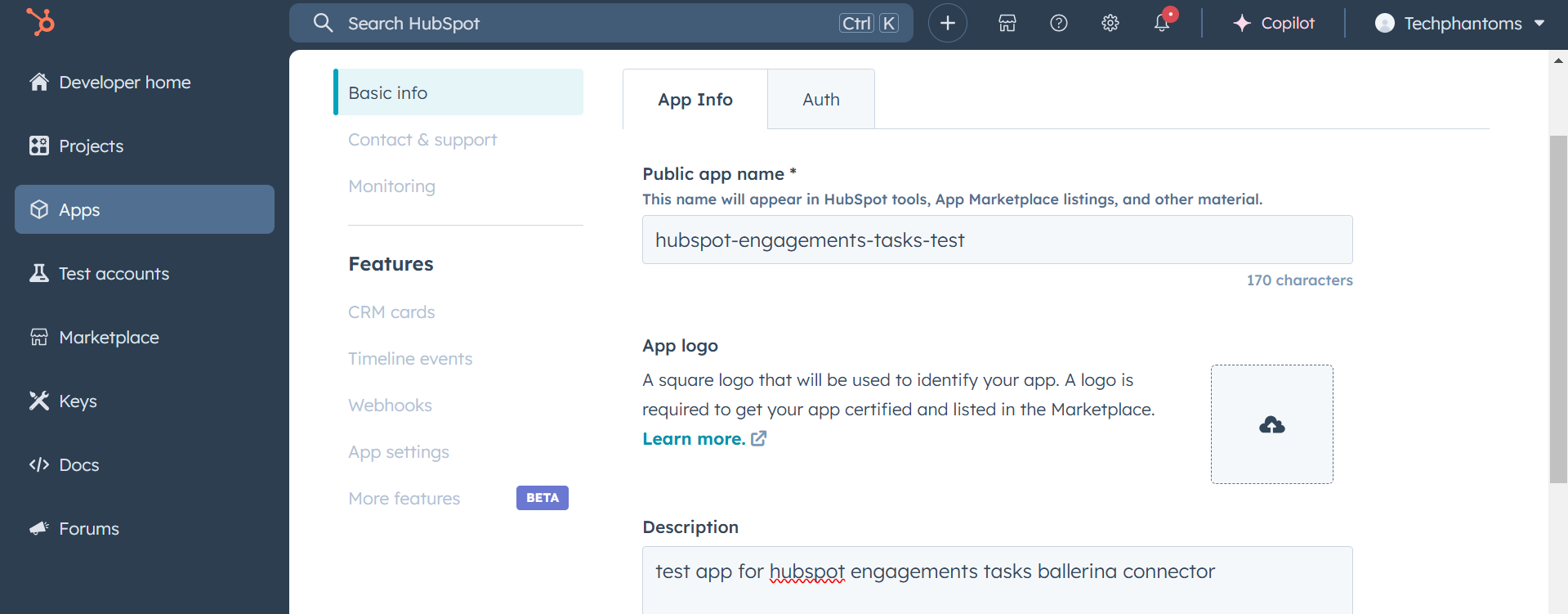
-
In the Scopes section, add the necessary scopes for your app using the "Add new scope" button:
crm.objects.contacts.readcrm.objects.contacts.write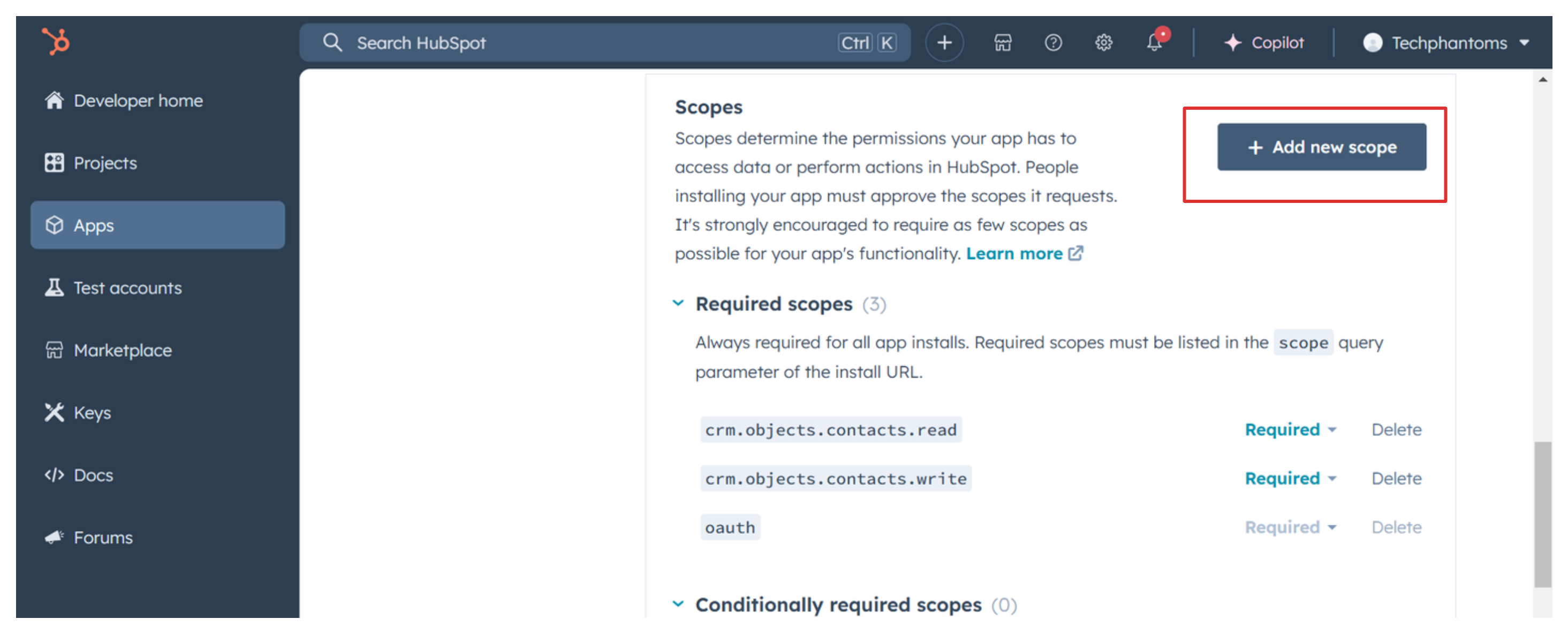
-
Add your Redirect URI in the relevant section. You can also use localhost addresses for local development purposes. Click Create App.
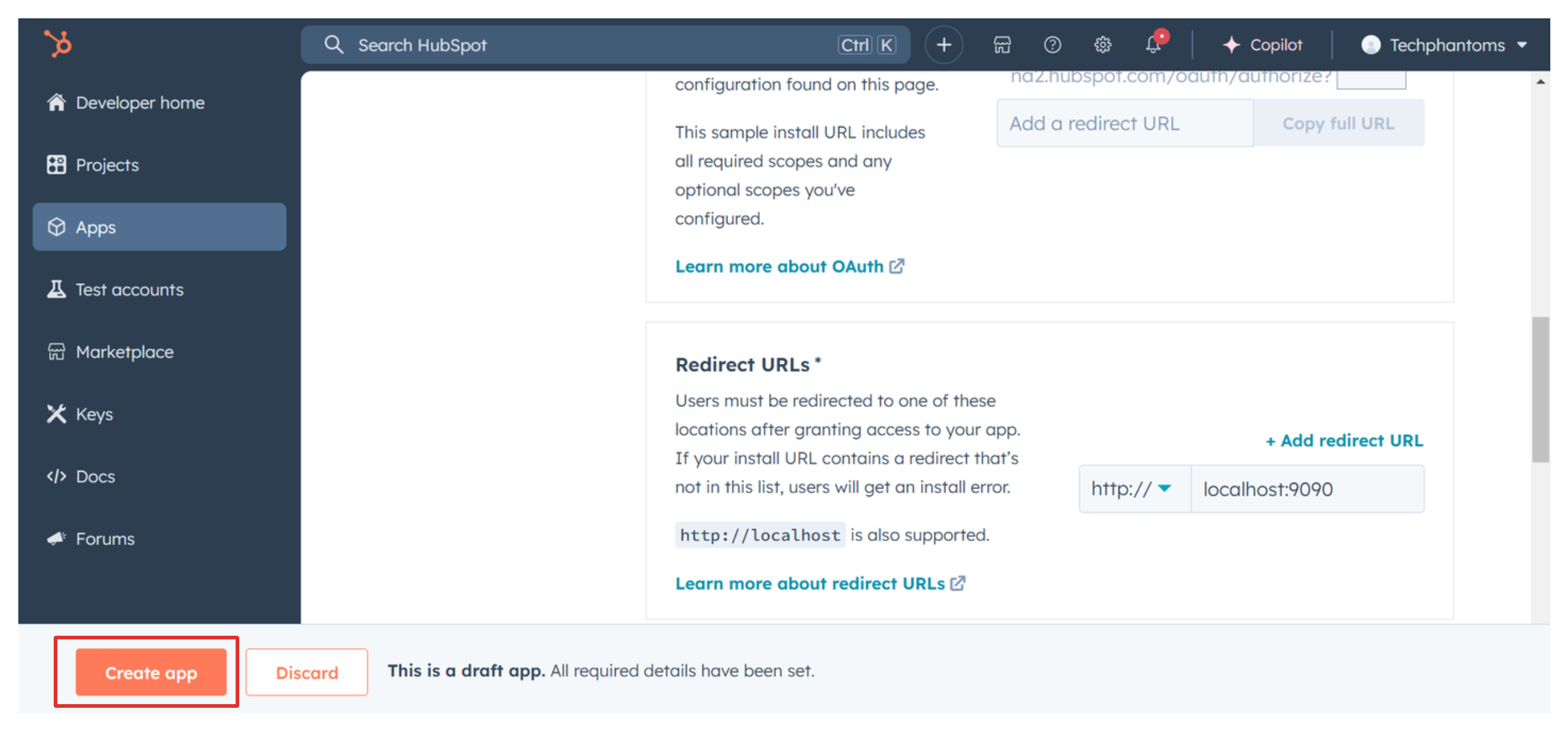
Step 5: Get your client id and client secret
- Navigate to the Auth section of your app. Make sure to save the provided Client ID and Client Secret.
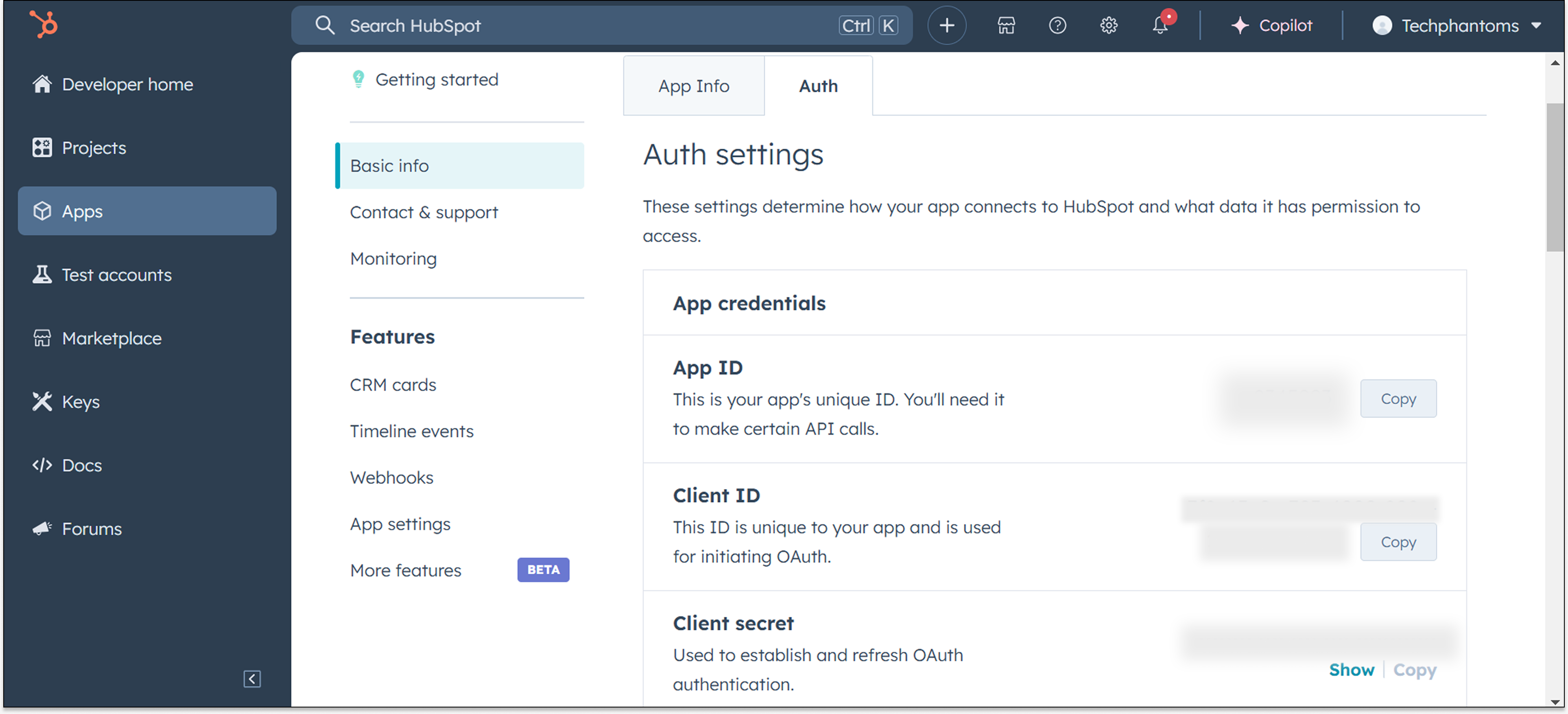
Step 6: Setup authentication flow
Before proceeding with the Quickstart, ensure you have obtained the Access Token using the following steps:
-
Create an authorization URL using the following format:
https://app.hubspot.com/oauth/authorize?client_id=<YOUR_CLIENT_ID>&scope=<YOUR_SCOPES>&redirect_uri=<YOUR_REDIRECT_URI>Replace the
<YOUR_CLIENT_ID>,<YOUR_REDIRECT_URI>, and<YOUR_SCOPES>with your specific value. -
Paste it in the browser and select your developer test account to install the app when prompted.
-
A code will be displayed in the browser. Copy the code.
-
Run the following curl command. Replace the
<YOUR_CLIENT_ID>,<YOUR_REDIRECT_URI>, and<YOUR_CLIENT_SECRET>with your specific value. Use the code you received in the above step 3 as the<CODE>.-
Linux/macOS
curl --request POST \ --url https://api.hubapi.com/oauth/v1/token \ --header 'content-type: application/x-www-form-urlencoded' \ --data 'grant_type=authorization_code&code=<CODE>&redirect_uri=<YOUR_REDIRECT_URI>&client_id=<YOUR_CLIENT_ID>&client_secret=<YOUR_CLIENT_SECRET>' -
Windows
curl --request POST ^ --url https://api.hubapi.com/oauth/v1/token ^ --header 'content-type: application/x-www-form-urlencoded' ^ --data 'grant_type=authorization_code&code=<CODE>&redirect_uri=<YOUR_REDIRECT_URI>&client_id=<YOUR_CLIENT_ID>&client_secret=<YOUR_CLIENT_SECRET>'
This command will return the access token necessary for API calls.
{ "token_type": "bearer", "refresh_token": "<Refresh Token>", "access_token": "<Access Token>", "expires_in": 1800 } -
-
Store the access token securely for use in your application.
Quickstart
To use the HubSpot Engagements Tasks connector in your Ballerina application, update the .bal file as follows:
Step 1: Import the module
Import the hubspot.crm.engagements.tasks module and oauth2 module.
import ballerina/oauth2; import ballerinax/hubspot.crm.engagements.tasks as hstasks;
Step 2: Instantiate a new connector
-
Instantiate a
hstasks:ConnectionConfigwith the obtained credentials and initialize the connector with it.configurable string clientId = ?; configurable string clientSecret = ?; configurable string refreshToken = ?; final hstasks:ConnectionConfig config = { auth : { clientId, clientSecret, refreshToken, credentialBearer: oauth2:POST_BODY_BEARER } }; final hstasks:Client hsTasks = check new (config); -
Create a
Config.tomlfile and, configure the obtained credentials in the above steps as follows:clientId = <Client Id> clientSecret = <Client Secret> refreshToken = <Refresh Token>
Step 3: Invoke the connector operation
Now, utilize the available connector operations. A sample use case is shown below.
Create a task
public function main() returns error? { hstasks:SimplePublicObjectInputForCreate taskCreateInput = { "associations": [ { "to": { "id": "84267202257" }, "types": [ { "associationCategory": "HUBSPOT_DEFINED", "associationTypeId": 204 } ] } ], "objectWriteTraceId": "string", "properties": { "hs_task_subject": "A sample task for example" } }; hstasks:SimplePublicObject response = check hsTasks->/.post(payload = taskCreateInput); }
Run the ballerina application
bal run
Examples
The HubSpot CRM Tasks connector provides practical examples illustrating usage in various scenarios. Explore these examples, covering the following use cases:
-
Task management in HubSpot CRM - This example searches for a task in HubSpot CRM by its subject, creating a new one if none exists or updating details like the due date and priority if found.
-
Task completion and status change in HubSpot CRM - This example checks a task's status in HubSpot CRM and updates it to "Completed" if necessary, ensuring efficient task management.
Import
import ballerinax/hubspot.crm.engagements.tasks;Other versions
1.0.0